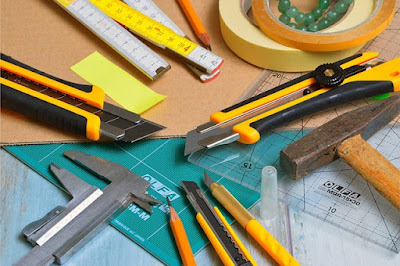How to Create a Fully Functional Workshop on a $1,000 Budget
 |
Standing in my garage with a vision in my mind and a handful of tools, I remember thinking—“How can I build a fully functional woodworking shop without breaking the bank?” That question sparked the journey. And what I discovered surprised me.
You don’t need a massive space or a massive budget. With the right workshop plans, you can build a well-equipped, professional-grade woodworking shop for under $1,000—even in a small corner of your basement, garage, or backyard shed. This post might contain affiliate links. We may earn a small commission at no extra cost to you.
Key Takeaways
-
Discover affordable woodworking workshop plans tailored for small spaces
-
Learn how to budget smartly for tools, layout, and essentials
-
Build a fully functional workshop for under $1,000
-
Explore setup ideas for garages, basements, and sheds
-
Avoid the top mistakes that waste money and space
The Dream: A Shop That Works With Your Life
Whether you're a weekend hobbyist or just starting your woodworking journey, setting up your own shop is the ultimate DIY goal. But many people think they need thousands of dollars and a huge space.
The truth? You can build a complete workshop with just $1,000—if you have a solid plan.
What Makes a Great Workshop Plan?
A good workshop plan is more than just a layout. It helps you:
-
Maximize small spaces (think 10’ x 6’)
-
Prioritize essential tools
-
Cut costs without sacrificing quality
-
Work safely and efficiently
Plans that include cutting layouts, tool setup, wiring, lighting, airflow, and even soundproofing are what separate a frustrating space from one that inspires.
Workshop Setup on a Budget: What You’ll Need
Here’s a breakdown of what a smart $1,000 budget looks like when starting from scratch:
| Category | Budget Range | Notes |
|---|---|---|
| Power Tools (Used) | $300–$400 | Look for deals on circular saws, drills, and sanders |
| Hand Tools | $100–$150 | Includes tape measure, clamps, chisels, squares |
| Workbench & Storage | $100–$200 | Build your own bench using free or recycled plans |
| Lighting & Wiring | $50–$100 | LED lights, power strips, and extension cords |
| Ventilation & Dust Control | $50–$100 | Box fan, air filter, or DIY dust separator |
| Soundproofing & Safety | $50 | Ear protection, masks, safety glasses |
Where to Find the Best Workshop Plans
1. The Ultimate Small Shop Guide
This 246-page plan shows you exactly how to set up a complete workshop for under $1,000—even in a space as small as 10' x 6'. It walks you through:
-
Choosing the right tools (and where to get them for up to 70% off)
-
Shop layout and storage hacks
-
Power, lighting, ventilation, and safety setup
💬 “It’s like having a pro woodworker set up your shop for you—without the cost.”
2. Garage Workshop Plans by Woodsmith
Perfect for one-car garage conversions. Comes with CAD layouts, tool zones, and space-saving cabinetry designs. Great for intermediate-level woodworkers.
3. Small Shed Conversion Plans by Ana White
If you’ve got a shed or plan to build one, Ana White’s free shed-to-shop conversion plans are gold. Includes materials list, framing diagrams, and bench layouts.
Mistakes to Avoid When Setting Up Your Shop
Before you start building, keep these in mind:
❌ Buying the wrong tools first – Focus on versatile, multipurpose tools before specialty ones
❌ Skipping dust collection – Clean air = better health and better finish
❌ Ignoring lighting – Poor lighting causes eye strain and mistakes
❌ No workflow planning – Your layout should match your project flow: measure → cut → assemble → finish
Success Stories: Workshop Builds That Prove It’s Possible
🧰 Jeff from Michigan
-
Converted a 9x7 corner of his garage
-
Spent $942 in total using secondhand tools
-
Built 3 workbenches and storage from free pallet wood
🛠️ Linda from Oregon
-
Transformed an old garden shed into a cozy shop
-
Used The Ultimate Small Shop Guide to plan everything
-
“I never thought I could build a real workshop. This changed everything.”
Final Thoughts: Build More, Spend Less
You don’t need a fancy setup or a huge budget. All you need is a plan, a bit of creativity, and the willingness to start.
With the right woodworking workshop plan, you can turn any small space into a builder’s paradise for less than $1,000. It’s the best investment you’ll make in your woodworking journey.






.jpeg)

.jpeg)
